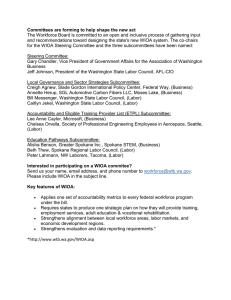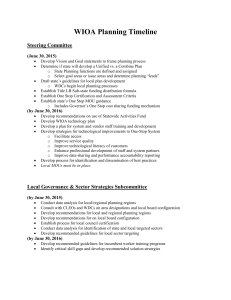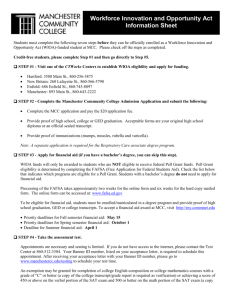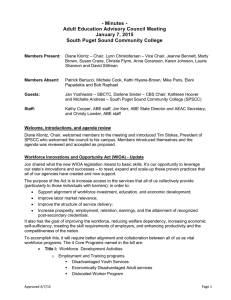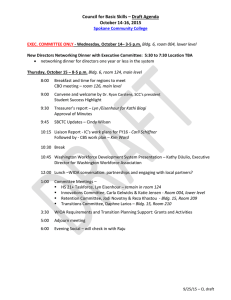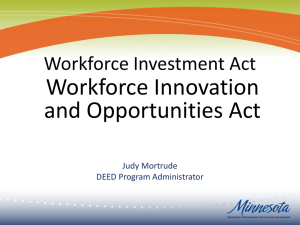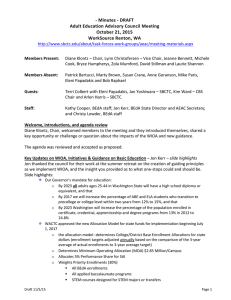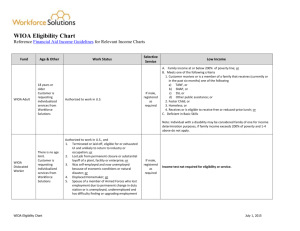Key Areas of Work and Potential WIOA Implementation Committees
advertisement
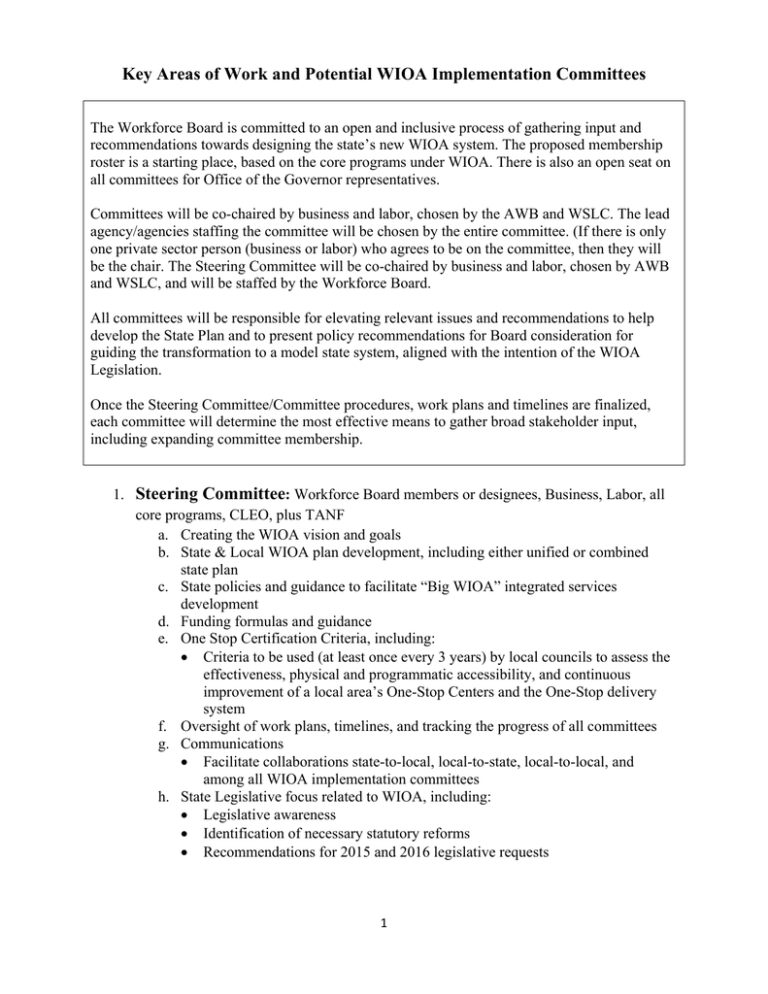
Key Areas of Work and Potential WIOA Implementation Committees The Workforce Board is committed to an open and inclusive process of gathering input and recommendations towards designing the state’s new WIOA system. The proposed membership roster is a starting place, based on the core programs under WIOA. There is also an open seat on all committees for Office of the Governor representatives. Committees will be co-chaired by business and labor, chosen by the AWB and WSLC. The lead agency/agencies staffing the committee will be chosen by the entire committee. (If there is only one private sector person (business or labor) who agrees to be on the committee, then they will be the chair. The Steering Committee will be co-chaired by business and labor, chosen by AWB and WSLC, and will be staffed by the Workforce Board. All committees will be responsible for elevating relevant issues and recommendations to help develop the State Plan and to present policy recommendations for Board consideration for guiding the transformation to a model state system, aligned with the intention of the WIOA Legislation. Once the Steering Committee/Committee procedures, work plans and timelines are finalized, each committee will determine the most effective means to gather broad stakeholder input, including expanding committee membership. 1. Steering Committee: Workforce Board members or designees, Business, Labor, all core programs, CLEO, plus TANF a. Creating the WIOA vision and goals b. State & Local WIOA plan development, including either unified or combined state plan c. State policies and guidance to facilitate “Big WIOA” integrated services development d. Funding formulas and guidance e. One Stop Certification Criteria, including: Criteria to be used (at least once every 3 years) by local councils to assess the effectiveness, physical and programmatic accessibility, and continuous improvement of a local area’s One-Stop Centers and the One-Stop delivery system f. Oversight of work plans, timelines, and tracking the progress of all committees g. Communications Facilitate collaborations state-to-local, local-to-state, local-to-local, and among all WIOA implementation committees h. State Legislative focus related to WIOA, including: Legislative awareness Identification of necessary statutory reforms Recommendations for 2015 and 2016 legislative requests 1 2. Committee for Sector Strategies to Close Skill Gaps in the Workplace: Staff from Workforce Board, ESD, Business, Labor, all core programs, WWA, Commerce, Chief Local Elected Officials (CLEOs), SBCTC Prof Tech, OSPI a. Regional Designations and Governance, including: Data analysis Initial Workforce Development Council (WDC) designations Consultation with CLEOs and WDCs on area designations and local board configuration Recommendations on local area designations and planning regions Recommendations on local Council membership composition Local Council certification process b. Sector Strategy and Industry Engagement, including: Identify targeted sectors, including required data analysis Recommend guidelines for local sector targeting Recommend guidelines for incumbent worker training programs Identify critical skill gaps and recommend solution strategies 3. Performance Accountability and ETPL Committee: Staff from Workforce Board, ESD, ABE, DVR, DSB, WWA, Business, Labor, all core programs a. Align current system(s) to WIOA for all core program b. Establish procedures for WIOA performance target-setting c. Recommendations for non-WIOA HSHW/WTR programs d. Develop processes to align Eligible Training Provider List (ETPL) with WIOA and make recommendations for ETPL criteria e. Develop performance criteria systems for Youth and for OJT 4. Education and Career Pathways through Integrated Service Delivery Models Committee: Staff from Workforce Board, Business, Labor, all core programs, all relevant DSHS divisions, Commerce, NASCAP, OSPI/CTE, SBCTC/CTE, L&I/Apprenticeship, WWA, business, labor, local and state stakeholders, other industry partnerships a. One-Stop System Create career pathways that are integrated through an ideal one-stop system b. Adult Populations with Barriers to Employment Recommend guidelines for integrated service delivery Recommend system performance goals Recommend strategies that lead to economic self-sufficiency c. Education and Training Pathways. Making education and training pathways available to youth and adult Guidance on “Big WIOA” integrated services development. 2 d. Youth Services Recommendations for leveraging 75% and 25% WIOA Title I-B Youth Program funds Guidelines for coordinated performance goal-setting across programs Strategies to improve outcomes for youth with disabilities Strategies to enhance employer engagement and career-connected learning Guidance on “Big WIOA” integrated services development 3
